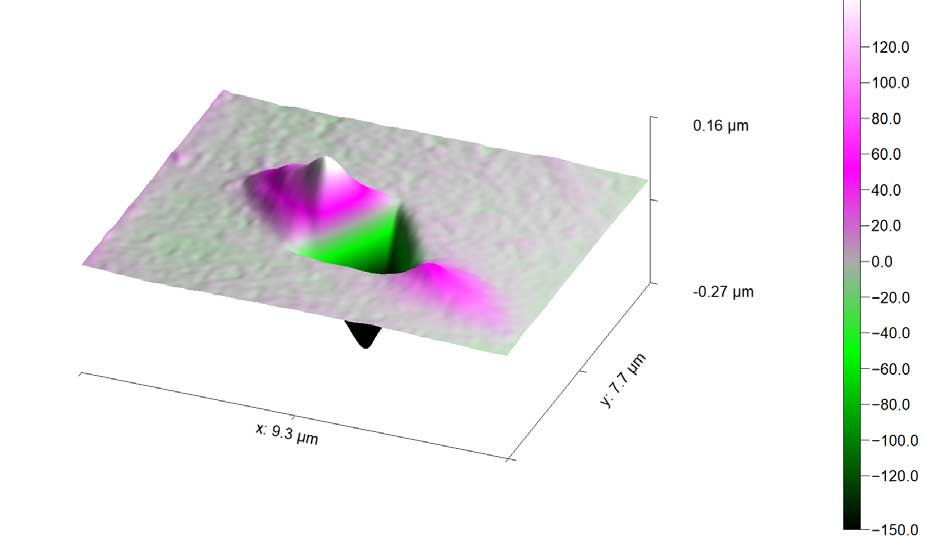
Cross-section of the fractured beryllium window after proton irradiation. Fracture accrues predominantly at grain boundaries.
A research project is currently being carried out at the UKAEA Materials Research Facility on the effects of radiation damage in beryllium.
The project involves the multi-scale characterisation of effects of extremely high energy proton irradiation on microstructure and mechanical properties of beryllium components, in a new generation of proton accelerator driven particle sources such as the Long Baseline Neutrino Facility (LBNF).
The future use of beryllium as target and beam window material in particle accelerator facilities may be limited by higher dose and higher temperatures of operation. The existing database on beryllium response to radiation effects relevant to proton accelerator environments is very limited and this complicates material selection and lifetime predictions for beam windows and targets.
FIB, SEM, EBSD, EDX, Nanoindentation, Microcantilever fracture tests, proton irradiation and helium implantation experiments demonstrated extremely high radiation-induced hardening and embrittlement at service temperatures relevant for current neutrino target facilities, and less evolution of properties for conditions relevant for the next generation targets. Potentially high impact lithium transmutant was highlighted for the next generation targets.

Topography map of nanoindentation print in beryllium
Due to the toxicity of beryllium, sample preparation and destructive tests with this material are highly time consuming, or not currently possible. In order to overcome this challenge, considerable work was carried out on safety measures for beryllium sample preparation. A materials recovery facility was used for the FIB sample preparation.
For the next step, the intention is that the Materials Research Facility will prepare detailed samples for Atom Probe Tomography and Transmission Electron Microscopy examinations at Oxford University after high temperature irradiation. Experiments with higher dose irradiations and comparison of micromechanical tests data with the standard size experiments are also planned.
The results of the project will aid design considerations for future neutrino target facilities with beryllium elements. The data is also useful for the fusion reactor community where beryllium elements may undergo neutron irradiation. Several scientific papers are being published, with more to follow.
The project sits within the RaDIATE collaboration (Radiation Damage In Accelerator Target Environments) and involves more than 15 participants from different countries. The main contributors to the “beryllium part” of the collaboration are from Fermi Lab (US), University of Oxford (UK), Rutherford Appleton Laboratory (UK) and UKAEA.